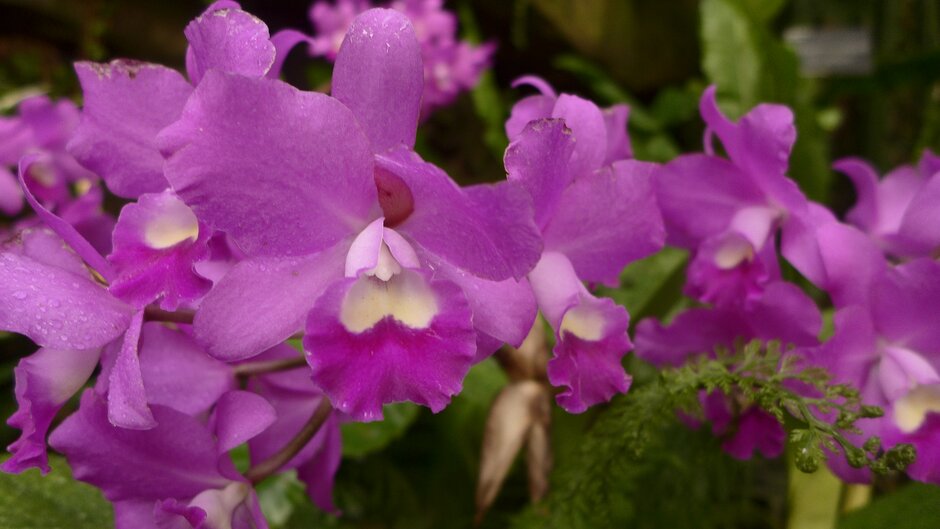Guarianthe skinneri
Skinner's cattleya
A tropical, epiphytic, evergreen orchid, producing a clump of upright, up to 50cm tall stems growing from a short, creeping rhizome. Each stem is spindle-shaped, broader in its upper half and serves as the plants storage of water and nutrients - they are often referred to as pseudobulbs. Each stem (pseudobulb) carries two fleshy, firm, apical leaves. The leaves are opposite, oval-elliptic, up to 20cm long and 5cm wide. Flowering stems emerge from the central tip of mature pseudobulbs from autumn to spring and are covered in two green, papery sheaths. Five to fifteen vibrant, purple-pink flowers are carried on short stems, each individual flower measuring appox. 9cm across. There are a few forms and varieties that occur, including pale purple, pale pink and pure white This orchid is officially known as a national flower of Costa Rica

Size
Ultimate height
0.1–0.5 metresTime to ultimate height
5–10 yearsUltimate spread
0.5–1 metresGrowing conditions
Moisture
Moist but well–drained, Well–drainedpH
NeutralColour & scent
| Stem | Flower | Foliage | Fruit | |
| Spring | Green Grey Silver | Pink Purple White | Green | |
|---|---|---|---|---|
| Summer | Green Grey Silver | Green | ||
| Autumn | Green Grey Silver | Pink Purple White | Green | |
| Winter | Green Grey Silver | Pink Purple White | Green |
Position
- Full sun
- Partial shade
Aspect
East–facing or North–facing or South–facing or West–facing
Exposure
Sheltered Hardiness
H1ABotanical details
- Family
- Orchidaceae
- Native to GB / Ireland
- No
- Foliage
- Evergreen
- Habit
- Clump forming, Columnar upright
- Genus
A small genus of epiphytic orchids which can be found in the wet forests of Mexico, Central America, Colombia, Venezuela and Trinidad. Leaves are strap-like and green whilst flowers appear in shades of purple, white and pink
- Name status
Correct
- Plant range
- C & S America
How to grow
Cultivation
Grow in an open, coarse bark-based orchid mix with addition of perlite and coconut chips. Provide bright light conditions, but shade from hot, direct mid-day sun. Ideal temperatures are 15°C minimum in winter and up to maximum of 28°C during summer. Water and feed plants regularly during the growing season. Ensure that all water drains away, preventing the plant sitting in water. Provide enough humidity by regular misting. Reduce watering and feeding in winter months and keep in a bright, sunny position. As with many orchids, they grow best when well-established and slightly pot-bound. Re-potting should be only done if the plant overgrows its container or before the potting mix starts to deteriorate - approximately once in 2-3 years. The plant should only be re-potted when the new growth appears in spring. See also indoor orchid cultivation
Propagation
Mature plants may be divided when the plant overgrows its container. Each division should have at least 3 older growths with a sufficient amount of stored energy and water, to support new growth and reduce stress after repotting
Suggested planting locations and garden types
- Houseplants
- Conservatory and greenhouse
Pruning
No pruning required
Pests
May be susceptible to glasshouse red spider mite, scale insects and mealybugs. Thrips may cause damage on flowers
Diseases
Generally disease-free. Poor air movement may cause bacterial or fungal rots. Good hygiene practice and sterilising cutting tools prevent the spread of virus diseases
Get involved
The RHS is the UK’s gardening charity, helping people and plants to grow - nurturing a healthier, happier world, one person and one plant at a time.